
Vercors Regional Natural Park: France's Untouched Wilderness
Discover Vercors Regional Natural Park in France: A pristine landscape of cliffs, gorges, forests, and meadows, offering rich wildlife, historical sites, and endless outdoor activities.
Nestled in the heart of southeastern France, Vercors Regional Natural Park is a haven for nature lovers and outdoor enthusiasts. This expansive park, covering over 200,000 hectares, showcases a stunning array of landscapes, from dramatic cliffs and deep gorges to lush forests and alpine meadows. The park is home to a rich variety of flora and fauna, including rare species like the Alpine ibex and the golden eagle, making it a paradise for wildlife watchers. Vercors is steeped in history and culture, with charming villages that seem frozen in time. Visitors can explore ancient caves adorned with prehistoric art, remnants of World War II resistance hideouts, and picturesque hamlets where traditional French life continues undisturbed. The park's diverse terrain offers endless opportunities for activities such as hiking, mountain biking, rock climbing, and even caving. Each season paints the park in different hues, from the vibrant greens of spring and summer to the golden tones of autumn and the pristine white of winter snow. The park is also known for its commitment to sustainable tourism and conservation. Efforts are made to protect the environment while providing visitors with an authentic and enriching experience. Whether you're seeking adventure, tranquility, or a deeper connection with nature, Vercors Regional Natural Park is a destination that promises unforgettable memories.
Local tips in Vercors Regional Natural Park
- Visit during spring or autumn to avoid the summer crowds and enjoy milder weather.
- Wear sturdy hiking boots as the terrain can be rugged and uneven.
- Bring a reusable water bottle and snacks, as amenities can be sparse in some areas.
- Check local guides for information on guided tours and activities available.
- Respect the environment by sticking to marked trails and not disturbing wildlife.
Vercors Regional Natural Park: France's Untouched Wilderness
Nestled in the heart of southeastern France, Vercors Regional Natural Park is a haven for nature lovers and outdoor enthusiasts. This expansive park, covering over 200,000 hectares, showcases a stunning array of landscapes, from dramatic cliffs and deep gorges to lush forests and alpine meadows. The park is home to a rich variety of flora and fauna, including rare species like the Alpine ibex and the golden eagle, making it a paradise for wildlife watchers. Vercors is steeped in history and culture, with charming villages that seem frozen in time. Visitors can explore ancient caves adorned with prehistoric art, remnants of World War II resistance hideouts, and picturesque hamlets where traditional French life continues undisturbed. The park's diverse terrain offers endless opportunities for activities such as hiking, mountain biking, rock climbing, and even caving. Each season paints the park in different hues, from the vibrant greens of spring and summer to the golden tones of autumn and the pristine white of winter snow. The park is also known for its commitment to sustainable tourism and conservation. Efforts are made to protect the environment while providing visitors with an authentic and enriching experience. Whether you're seeking adventure, tranquility, or a deeper connection with nature, Vercors Regional Natural Park is a destination that promises unforgettable memories.
When is the best time to go to Vercors Regional Natural Park?
Unmissable attractions to see
Fontaines Pétrifiantes Garden
Explore the enchanting Fontaines Pétrifiantes Garden in La Sône, where nature's beauty meets fascinating petrifying springs and botanical diversity.
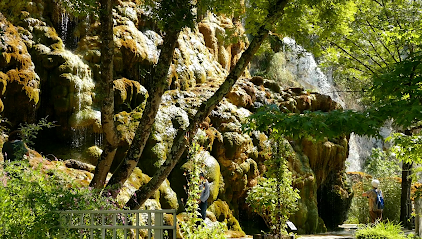
Passerelle Himalayenne du Drac
Discover breathtaking views and thrilling hikes at Passerelle Himalayenne du Drac, a stunning bridge in the French Alps.
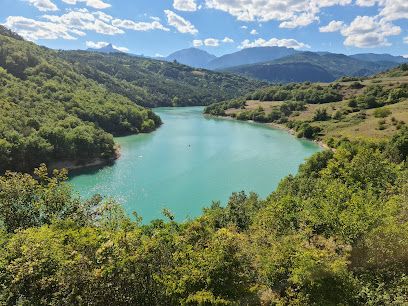
Passerelle himalayenne de l'Ébron
Discover the stunning Passerelle Himalayenne de l'Ébron: a breathtaking suspension bridge in the French Alps, perfect for hiking and unforgettable views.
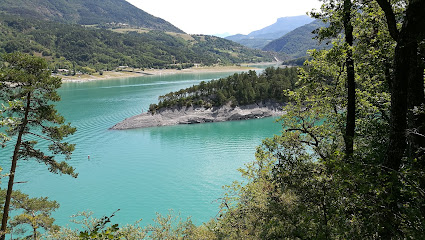
Pont en Royans's Water Museum
Explore the enchanting Water Museum in Pont en Royans, where the beauty and importance of water come to life through engaging exhibits and stunning scenery.
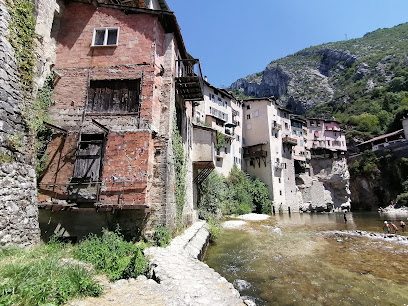
Garden Railway
Experience the magic of model trains surrounded by stunning gardens at Garden Railway in Chatte, a delightful attraction for families and nature lovers.

Cave Thais
Explore the mesmerizing Cave Thais in Saint-Nazaire-en-Royans, a breathtaking natural attraction filled with stunning formations and rich local lore.
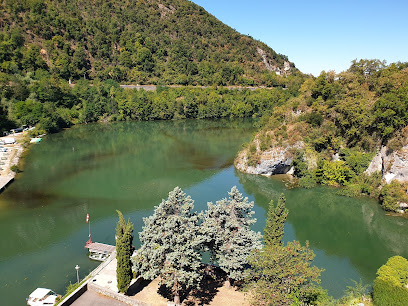
Resistance Memorial
Discover the poignant stories of courage and resistance at the Resistance Memorial in Vassieux-en-Vercors, a tribute to the heroes of World War II.
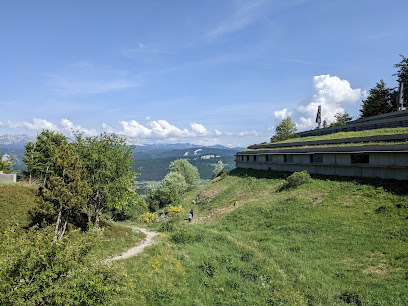
Sivom Landscaping Lake Monteynard
Explore the stunning landscapes and outdoor adventures awaiting at Lake Monteynard in the French Alps, a must-visit tourist attraction.
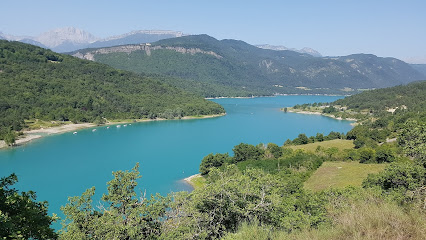
Musée départemental de la Résistance du Vercors
Discover the courageous tales of the Vercors resistance at the Musée départemental de la Résistance du Vercors, a profound historical site in France.
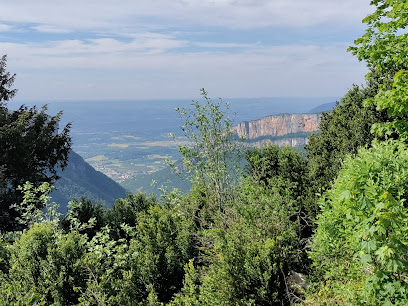
Chute de la Druise Waterfall
Experience the breathtaking beauty of Chute de la Druise Waterfall, a must-visit natural wonder and hiking paradise in Plan-de-Baix, France.
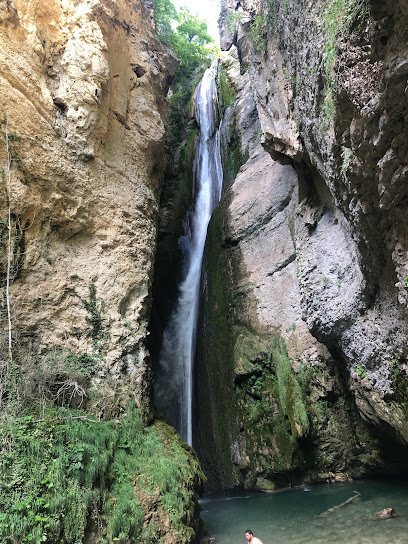
La Ferme aux Papillons
Explore the magical butterfly haven at La Ferme aux Papillons in Die, France, where nature's beauty takes flight in a colorful paradise.
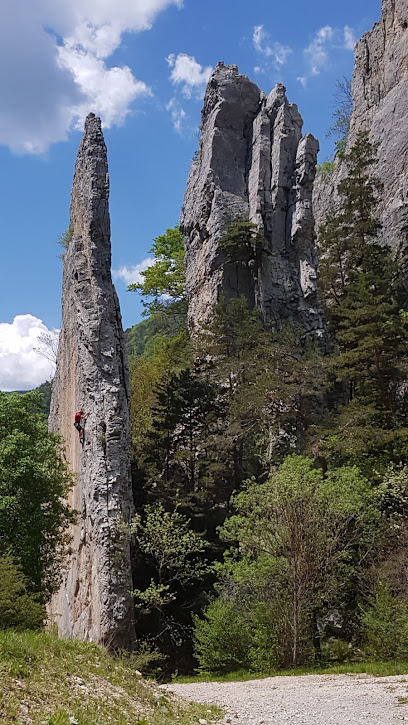
Caves of La Luire - Guided tours
Explore the stunning natural beauty and captivating history of the Caves of La Luire in Vercors, a must-visit destination for every traveler.

Vallon Combeau
Explore Vallon Combeau, a breathtaking nature preserve in Châtillon-en-Diois, offering stunning landscapes and rich biodiversity for every nature lover.
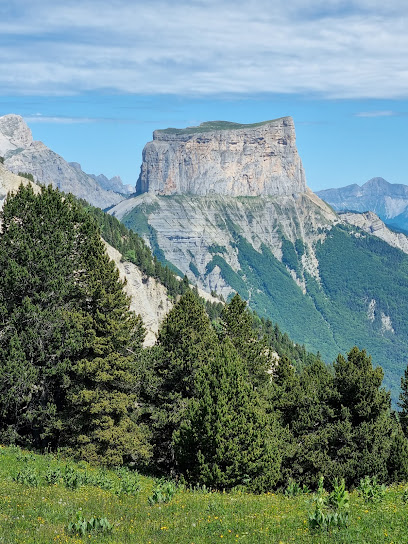
Le Monde Merveilleux des Lutins
Explore the magical realm of Le Monde Merveilleux des Lutins, an amusement park filled with enchanting attractions and whimsical adventures for all ages.
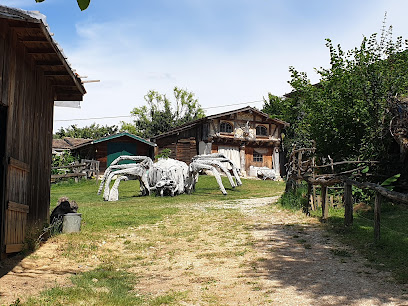
Route touristique de Combe Laval
Discover the breathtaking beauty of Route touristique de Combe Laval, a scenic drive through the heart of the French Alps, perfect for nature lovers.
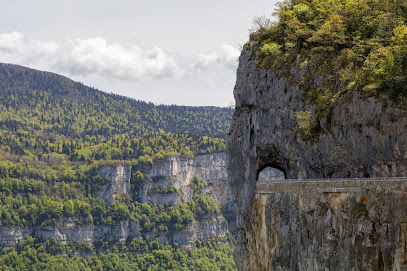
Essential places to dine
Le Clariant
Experience authentic French cuisine at Le Clariant in Corrençon-en-Vercors - where every dish tells a story amidst stunning alpine views.
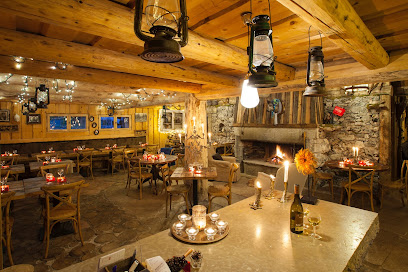
Côté Terrasse VERCORS
Experience authentic French cuisine at Côté Terrasse VERCORS while enjoying breathtaking mountain views in La Chapelle-en-Vercors.
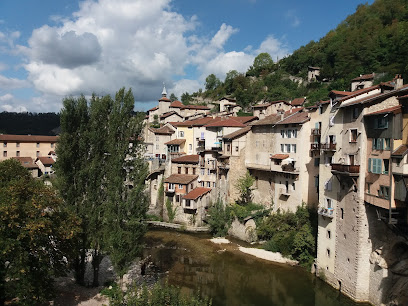
Les Hauts Plateaux
Discover Les Hauts Plateaux: A charming French restaurant offering exquisite cuisine amid the stunning landscapes of Corrençon-en-Vercors.
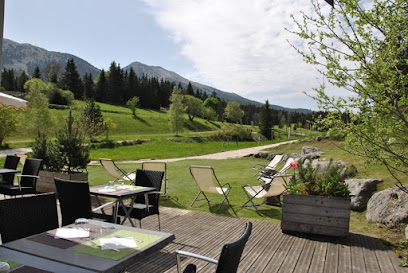
Auberge des Allières
Experience authentic French cuisine and cozy mountain lodging at Auberge des Allières in Lans-en-Vercors.
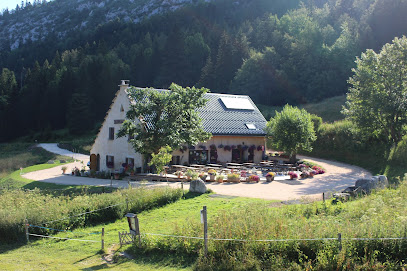
Auberge de la Croix Perrin
Discover comfort and relaxation at Auberge de la Croix Perrin, your gateway to adventure in the stunning Vercors Mountains.
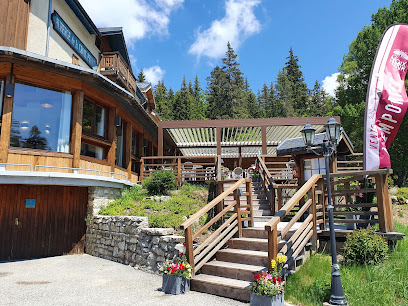
La Cabane de l'Aigle
Savor exquisite French cuisine at La Cabane de l'Aigle, nestled in scenic Lans-en-Vercors with stunning mountain views.
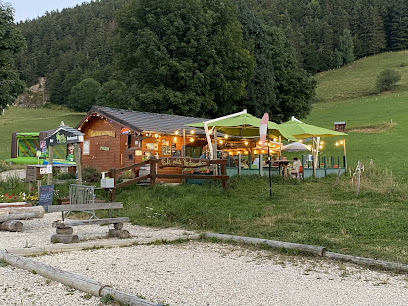
Café Brochier
Experience authentic French cuisine at Café Brochier in Saint-Julien-en-Vercors – where every dish tells a story.
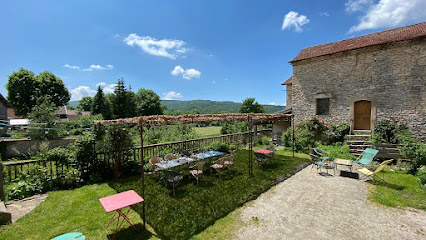
Hôtel Restaurant Bellier - Vercors
Experience the charm of Hôtel Restaurant Bellier in La Chapelle-en-Vercors: where comfort meets culinary excellence amidst stunning mountain views.
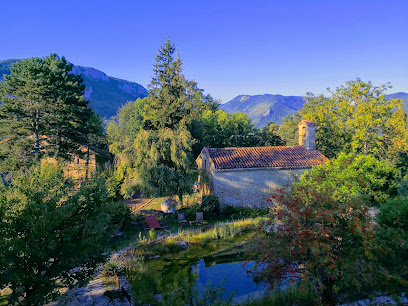
Le Bois Des Mûres
Experience exquisite French dining at Le Bois Des Mûres in Lans-en-Vercors – where culinary artistry meets stunning scenery.
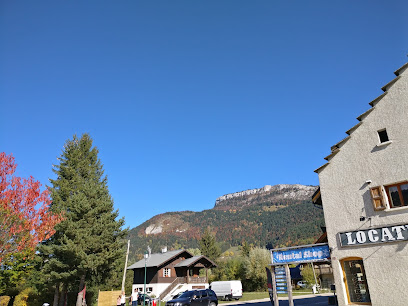
Auberge de Malaterre.
Discover Auberge de Malaterre, where authentic French cuisine meets breathtaking alpine views in Villard-de-Lans.
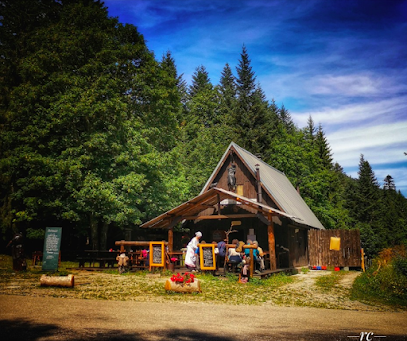
Cabane Café
Discover culinary excellence at Cabane Café in Choranche—where local flavors meet stunning natural beauty.
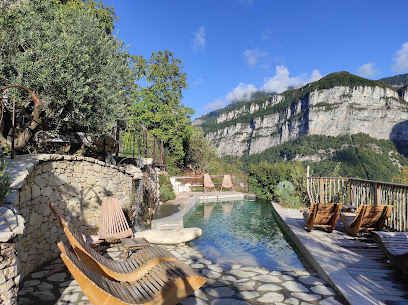
Hôtel restaurant Auberge Le Collet
Discover exquisite French cuisine and cozy accommodations at Hôtel Restaurant Auberge Le Collet in Saint-Agnan-en-Vercors.

Auberge refuge de Roybon
Discover rustic charm and delectable cuisine at Auberge Refuge de Roybon, your perfect alpine retreat in the heart of Vercors.

Au Roman du Vercors
Experience exquisite fine dining at Au Roman du Vercors - where tradition meets innovation in French cuisine amidst stunning landscapes.
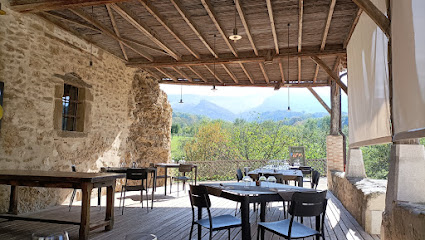
La Cabane des Jassinets
Experience authentic French cuisine at La Cabane des Jassinets in Lans-en-Vercors—where local flavors meet stunning mountain views.
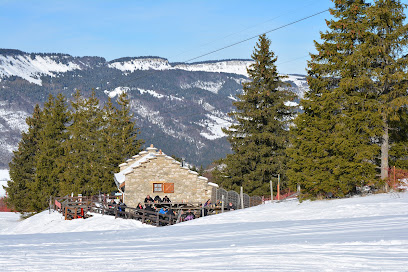
Markets, malls and hidden boutiques
Parc naturel régional du Vercors
Explore the stunning landscapes and rich biodiversity of Parc naturel régional du Vercors, a premier nature preserve in the French Alps.
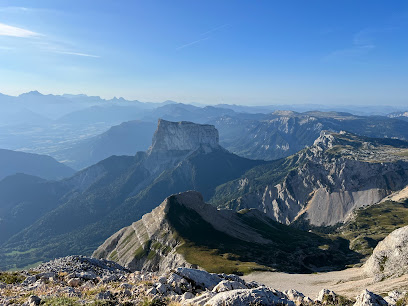
Caves of La Luire - Guided tours
Explore the breathtaking Caves of La Luire, a stunning natural wonder with guided tours, rich history, and captivating geological formations.
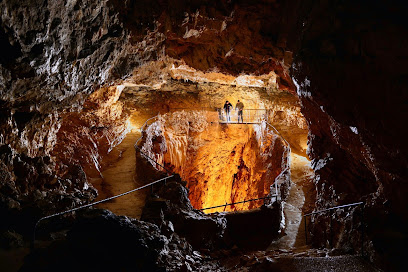
Altiplano
Discover Altiplano in Villard-de-Lans - your one-stop shop for biking, skiing, and mountain gear in the heart of the French Alps.
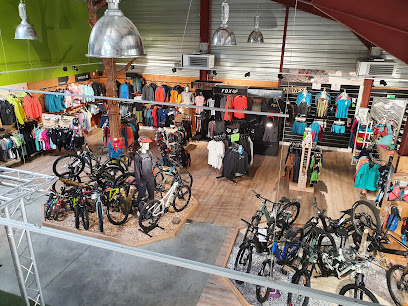
La Chèvrerie des Cabrioles, Corrençon en Vercors
Discover the rich flavors of artisanal cheese at La Chèvrerie des Cabrioles, a charming farm and cheese shop in the heart of the Vercors.
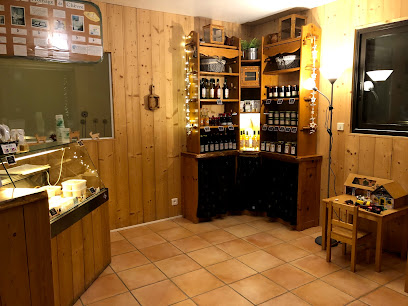
Mountain Coffee
Discover the delightful Mountain Coffee in Lans-en-Vercors, where local flavors meet stunning mountain views in a cozy setting.
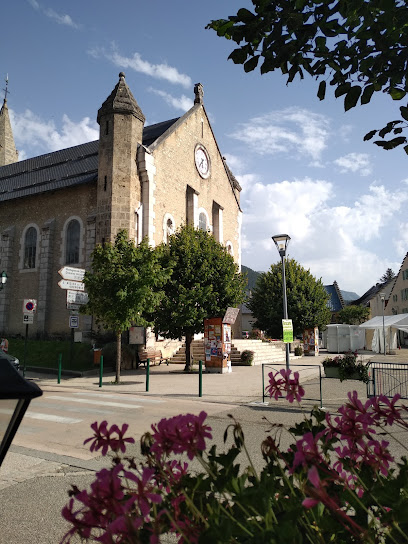
Etoile du Vercors SAS
Experience the rich flavors of artisanal cheeses at Etoile du Vercors SAS, a must-visit cheese shop in the enchanting Vercors region of France.
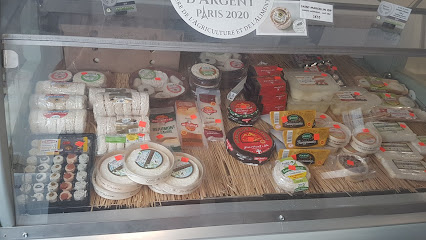
Skiset Grillet Sports
Explore the great outdoors with Skiset Grillet Sports, your trusted partner for ski rentals, mountain gear, and biking adventures in Gresse-en-Vercors.
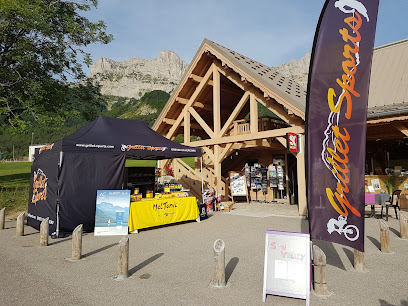
CYCLES ET CO
Discover outdoor adventures with top-quality bicycles and ski equipment at CYCLES ET CO in Méaudre, the heart of the French Alps.
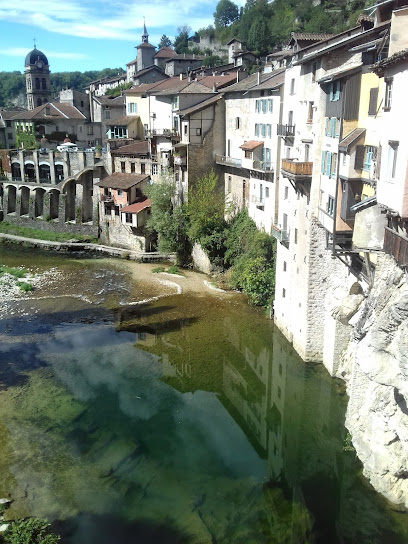
The Blue Suede
Discover unique gifts and local treasures at The Blue Suede in Villard-de-Lans, the perfect stop for tourists seeking authentic souvenirs.
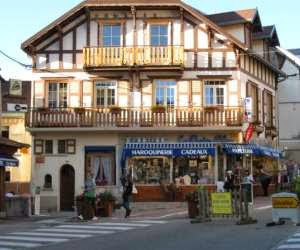
Cave des 4 routes
Explore the finest selection of local and international wines at Cave des 4 Routes in Lans-en-Vercors, a must-visit destination for wine lovers.

Les Ravioles des Grands Goulets
Discover the authentic taste of French ravioles at Les Ravioles des Grands Goulets in La Chapelle-en-Vercors, a culinary delight you can't miss.
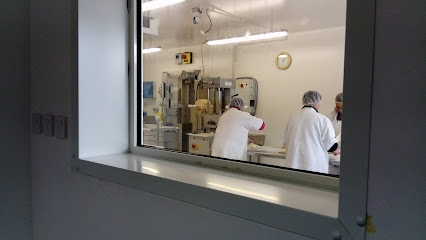
E Bio
Discover E Bio, Villard-de-Lans' organic treasure, offering fresh local produce and eco-friendly products for health-conscious travelers.
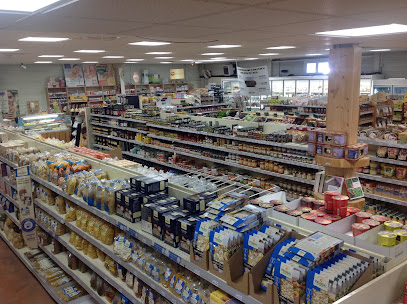
Snowcop
Explore unique fashion and local craftsmanship at Snowcop Boutique, a charming shopping destination for memorable souvenirs.

Riders On The Storm - Réparation & Location Vélos
Discover the beauty of the French Alps with quality bike rentals and expert repairs at Riders On The Storm in Villard-de-Lans.
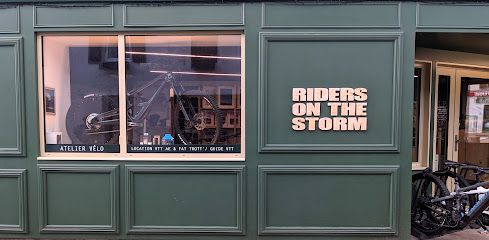
La Fabrique Du Ski
Discover premium ski rentals and expert repair services at La Fabrique Du Ski in Villard-de-Lans, your gateway to unforgettable alpine adventures.
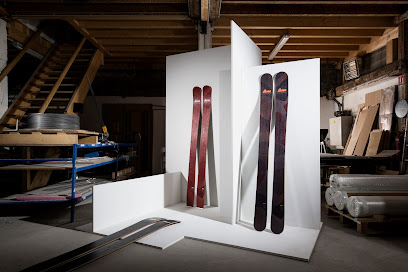
Essential bars & hidden hideouts
Parc naturel régional du Vercors
Experience breathtaking landscapes and diverse wildlife at Parc naturel régional du Vercors, a true gem in the French Alps.
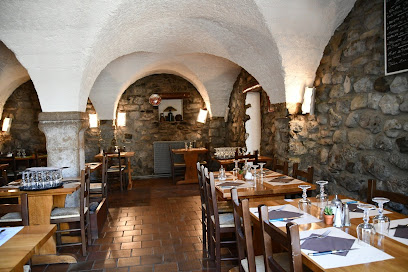
Le Clariant
Experience the authentic taste of France at Le Clariant, where culinary artistry meets the stunning landscapes of Corrençon-en-Vercors.
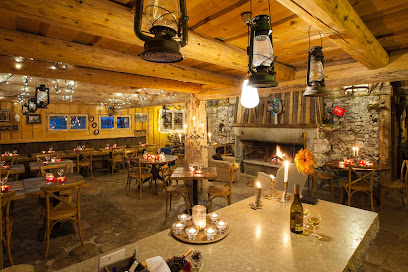
Les Hauts Plateaux
Experience exquisite French cuisine amidst the stunning scenery of the French Alps at Les Hauts Plateaux in Corrençon-en-Vercors.
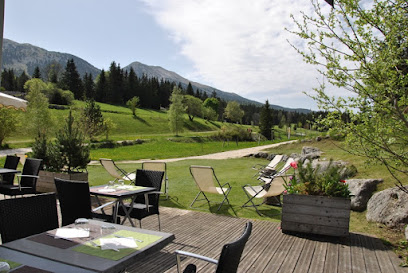
Auberge des Allières
Discover the serene charm of Auberge des Allières, where delightful cuisine meets stunning mountain scenery in Lans-en-Vercors.

La Cabane de l'Aigle
Experience authentic French cuisine amidst the breathtaking views of Lans-en-Vercors at La Cabane de l'Aigle.
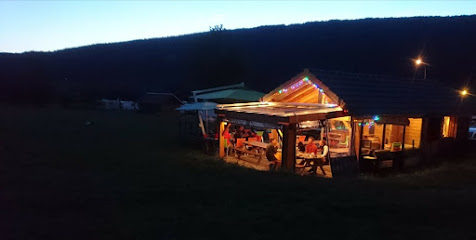
Le Banc de l'Ours Restaurant d'Alpage
Experience authentic French cuisine at Le Banc de l'Ours, nestled in the beautiful Alps of Autrans, perfect for a cozy alpine dining experience.
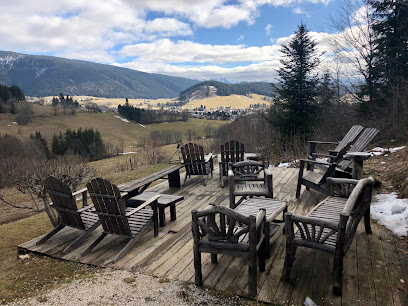
Auberge de Malaterre.
Discover authentic French cuisine at Auberge de Malaterre in Villard-de-Lans, a perfect blend of rustic charm and delicious flavors.
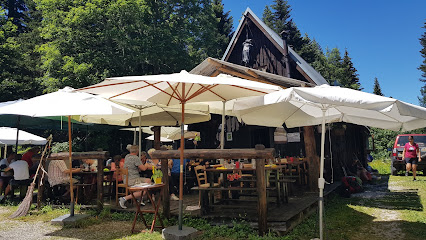
Hôtel restaurant Auberge Le Collet
Experience authentic French cuisine and warm hospitality at Hôtel Restaurant Auberge Le Collet in the stunning Vercors region.

Restaurant La Charrette
Experience the authentic taste of France at Restaurant La Charrette in Lans-en-Vercors, where local ingredients meet traditional culinary excellence.
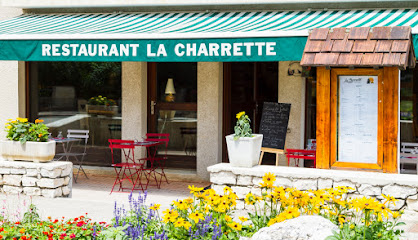
Logis Hôtel le Carnot
Experience the perfect blend of culinary excellence and cozy accommodation at Logis Hôtel le Carnot in Die, France.

Vercors Massif
Explore the breathtaking Vercors Massif in the French Alps, a paradise for outdoor adventures, rich biodiversity, and charming alpine villages.
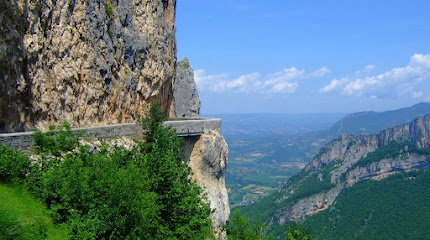
Auberge refuge de Roybon
Discover the culinary delights of Auberge Refuge de Roybon, where mountain charm meets delicious local cuisine in the heart of the Vercors.

La Cabane des Jassinets
Discover La Cabane des Jassinets in Lans-en-Vercors, where local flavors meet stunning alpine views, offering a unique dining experience in the heart of the French Alps.
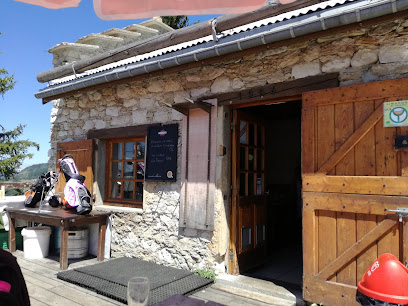
Restaurant La Glisse à Villard-de-Lans
Discover the flavors of France at Restaurant La Glisse in Villard-de-Lans, where alpine charm meets exceptional cuisine.
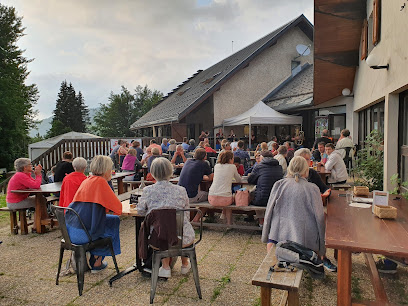
La Bulle de Lans
Experience the authentic flavors of the Vercors Mountains at La Bulle de Lans, where culinary excellence meets breathtaking views.
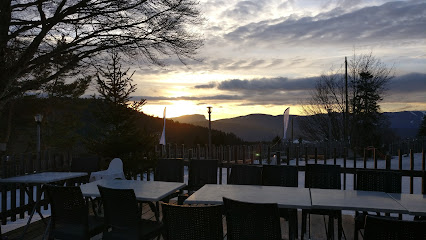
Local Phrases about Vercors Regional Natural Park
-
- HelloBonjour
[bohn-zhoor] - GoodbyeAu revoir
[oh ruh-vwahr] - YesOui
[wee] - NoNon
[nohn] - Please/You're welcomeS'il vous plaît / De rien
[seel voo pleh / duh ryehn] - Thank youMerci
[mehr-see] - Excuse me/SorryExcusez-moi / Désolé
[ehk-skew-zay mwah / day-zoh-lay] - How are you?Comment ça va?
[koh-mohn sah vah] - Fine. And you?Bien. Et vous?
[byen. ay voo] - Do you speak English?Parlez-vous anglais?
[par-lay voo ahn-glay] - I don't understandJe ne comprends pas
[zhuh nuh kohm-prahnd pah]
- HelloBonjour
-
- I'd like to see the menu, pleaseJe voudrais voir la carte, s'il vous plaît
[zhuh voo-dray vwar lah kart, seel voo pleh] - I don't eat meatJe ne mange pas de viande
[zhuh nuh mahnzh pah duh vee-ahnd] - Cheers!Santé!
[sahn-tay] - I would like to pay, pleaseJe voudrais payer, s'il vous plaît
[zhuh voo-dray pay-ay, seel voo pleh]
- I'd like to see the menu, pleaseJe voudrais voir la carte, s'il vous plaît
-
- Help!Au secours!
[oh sey-coor] - Go away!Allez-vous en!
[ah-lay vooz ahn] - Call the Police!Appelez la police!
[ah-peh-lay lah poh-lees] - Call a doctor!Appelez un médecin!
[ah-peh-lay uh may-deh-sahn] - I'm lostJe suis perdu
[zhuh swee pehr-doo] - I'm illJe suis malade
[zhuh swee mah-lahd]
- Help!Au secours!
-
- I'd like to buy...Je voudrais acheter...
[zhuh voo-dray zheh-tay] - I'm just lookingJe regarde juste
[zhuh ruh-gard zhuhst] - How much is it?Combien ça coûte?
[kohm-byen sah koot] - That's too expensiveC'est trop cher
[say troh shehr] - Can you lower the price?Pouvez-vous baisser le prix?
[poo-vay voo beh-say luh pree]
- I'd like to buy...Je voudrais acheter...
-
- What time is it?Quelle heure est-il?
[kell uhr eh-teel] - It's one o'clockIl est une heure
[eel ehz oon uhr] - Half past (10)Dix et demi
[dees ay duh-mee] - MorningMatin
[mah-tahn] - AfternoonAprès-midi
[ah-pray mee-dee] - EveningSoir
[swahr] - YesterdayHier
[yehr] - TodayAujourd'hui
[oh-zhoor-dwee] - TomorrowDemain
[duh-mahn] - 1Un
[uh] - 2Deux
[duh] - 3Trois
[twah] - 4Quatre
[kat] - 5Cinq
[sank] - 6Six
[sees] - 7Sept
[seht] - 8Huit
[weet] - 9Neuf
[nuhf] - 10Dix
[dees]
- What time is it?Quelle heure est-il?
-
- Where's a/the...?Où est un/le...?
[oo eh uh/luh] - What's the address?Quelle est l'adresse?
[kell eh la-dress] - Can you show me (on the map)?Pouvez-vous me montrer (sur la carte)?
[poo-vay voo muh mohn-tray (soor lah kart)] - When's the next (bus)?Quand est le prochain (bus)?
[kohnd eh luh proh-shang (boos)] - A ticket (to ....)Un billet (pour ....)
[uh bee-yay (poor)]
- Where's a/the...?Où est un/le...?
History of Vercors Regional Natural Park
-
The Vercors region boasts evidence of human habitation dating back to prehistoric times. Numerous caves, including the notable Grotte de la Luire, contain artifacts and cave paintings that suggest early humans settled in the area over 50,000 years ago. These ancient inhabitants lived as hunter-gatherers, making use of the natural resources provided by the region's diverse landscape.
-
During the Roman era, the Vercors region was integrated into the Roman Empire. The Romans constructed roads and bridges to facilitate trade and military movement. Evidence of Roman settlements and artifacts, such as coins and pottery, have been discovered, indicating that the area was an important part of the Roman province of Gallia Narbonensis.
-
In the Middle Ages, the Vercors region became strategically significant and saw the construction of numerous castles and fortresses. These structures were built to protect the local population and control the mountain passes. The Château de Rochechinard and Château de Montségur are notable examples of medieval fortifications that still stand today, offering a glimpse into the region's feudal past.
-
One of the most significant historical events in the Vercors region is its role during World War II. The rugged terrain of the Vercors Plateau provided an ideal location for the French Resistance to establish a stronghold. In 1944, the Maquis du Vercors declared the area a Free Republic, temporarily liberating it from German occupation. However, this act led to a brutal counterattack by German forces, resulting in tragic loss of life and destruction. The courage and sacrifice of the Resistance fighters are commemorated at the Memorial de la Résistance in Vassieux-en-Vercors.
-
After World War II, the Vercors region underwent significant rebuilding efforts. The local communities focused on restoring villages and infrastructure that had been damaged or destroyed. In 1970, the establishment of Vercors Regional Natural Park marked a new chapter in the region's history. The park aims to protect the natural environment, promote sustainable tourism, and preserve the cultural heritage of the area. Today, visitors to the park can explore its rich history while enjoying its scenic beauty and diverse ecosystems.
Vercors Regional Natural Park Essentials
-
Vercors Regional Natural Park is located in southeastern France, primarily within the departments of Isère and Drôme. The nearest major city is Grenoble, which is well connected by air, rail, and road. The closest airport is Grenoble Alpes-Isère Airport, around 70 km away. Alternatively, you can fly into Lyon-Saint Exupéry Airport, which is about 130 km from the park. From Grenoble, you can take a bus or rent a car to reach the park. The train station in Grenoble offers connections to major French cities like Paris, Lyon, and Marseille.
-
Once in the Vercors region, having a car is the most convenient way to explore the park, as public transport options within the park are limited. Car rentals are available in Grenoble and other nearby cities. For those who prefer not to drive, guided tours and shuttle services are available during the peak tourist season. Cycling is also a popular way to explore the park, with numerous bike rentals available.
-
The official currency in France is the Euro (EUR). Credit and debit cards are widely accepted in hotels, restaurants, and shops within the park. However, it is advisable to carry some cash, especially if you plan to visit smaller villages or rural areas where card payment may not be an option. ATMs are available in larger towns around the park.
-
Vercors Regional Natural Park is generally very safe for tourists. However, standard travel precautions should be observed. Keep an eye on your belongings, especially in busier areas and during the tourist season. Crime rates targeting tourists are very low, but it is always wise to stay vigilant. If you are hiking or engaging in outdoor activities, make sure to inform someone of your plans and carry necessary safety equipment.
-
In case of an emergency, dial 112 for immediate assistance in France. This number connects you to emergency services including police, fire, and medical assistance. Hospitals and medical facilities are available in nearby cities like Grenoble and Valence. It is recommended to have travel insurance that covers medical emergencies. Pharmacies are available in larger towns within the park for minor health issues.
-
Fashion: Do wear comfortable and weather-appropriate clothing, especially if you plan to hike. Avoid wearing overly casual or revealing clothing in more formal settings. Religion: Do respect local customs and traditions. Some areas may have religious sites; dress modestly when visiting these places. Public Transport: Do be respectful and considerate to other passengers. Don't eat or drink on public transport. Greetings: Do greet people with a 'Bonjour' (Good day) and a smile. A handshake is a common greeting. Eating & Drinking: Do try local specialties and accept food offerings graciously. Don't rush through meals; savor the dining experience, which is an important aspect of French culture.
-
To experience Vercors Regional Natural Park like a local, visit local markets to buy fresh produce and traditional French goods. Engage with locals, as they are often friendly and willing to share stories about the area's history and culture. Don't miss visiting the charming villages of Pont-en-Royans and Saint-Nazaire-en-Royans, known for their historic buildings and picturesque views. For outdoor enthusiasts, the park offers numerous trails for hiking, cycling, and even caving. The Grotte de Choranche is a must-visit for its stunning limestone formations and underground rivers.
Nearby Cities to Vercors Regional Natural Park
-
Things To Do in Lyon
-
Things To Do in Annecy
-
Things To Do in Avignon
-
Things To Do in Nîmes
-
Things To Do in Geneva
-
Things To Do in Aix-en-Provence
-
Things To Do in Turin
-
Things To Do in Marseille
-
Things To Do in Montpellier
-
Things To Do in Cannes
-
Things To Do in Nice
-
Things To Do in Lausanne
-
Things To Do in Vevey
-
Things To Do in Montreux
-
Things To Do in Les Moneghetti











